
Rastafari, sometimes called Rastafarianism, is an Abrahamic religion that developed in Jamaica during the 1930s. It is classified as both a new religious movement and a social movement by scholars of religion. There is no central authority in control of the movement and much diversity exists among practitioners, who are known as Rastafari, Rastafarians, or Rastas.
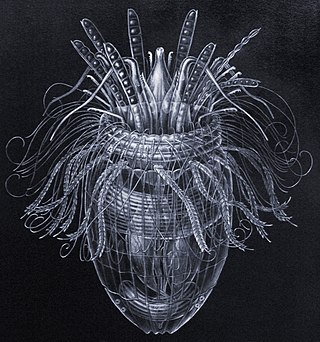
Loricifera is a phylum of very small to microscopic marine cycloneuralian sediment-dwelling animals with 43 described species. and approximately 100 more that have been collected and not yet described. Their sizes range from 100 μm to ca. 1 mm.

3-2-1 Contact is an American science educational television show produced by the Children's Television Workshop. It aired on PBS from 1980 to 1988 and later ran on Noggin from 1999 to 2003. The show teaches scientific principles and their applications. Edward G. Atkins, who was responsible for much of the scientific content of the show, felt that the TV program would not replace a classroom but would encourage viewers to ask questions about the scientific purpose of things.

Corixidae is a family of aquatic insects in the order Hemiptera. They are found worldwide in virtually any freshwater habitat and a few species live in saline water. There are about 500 known species worldwide, in 55 genera, including the genus Sigara.

Cydia is a large genus of tortrix moths, belonging to the tribe Grapholitini of subfamily Olethreutinae. Its distinctness from and delimitation versus the tribe's type genus Grapholita requires further study.
The discography of the experimental music group Psychic TV consists of over 100 full-length albums, over 15 compilation albums and over 30 singles and EPs.

Entoloma is a genus of fungi in the order Agaricales. Called pinkgills in English, basidiocarps are typically agaricoid, though a minority are gasteroid. All have salmon-pink basidiospores which colour the gills at maturity and are angular (polyhedral) under a microscope. The genus is large, with almost 2000 species worldwide. Most species are saprotrophic, but some are ectomycorrhizal, and a few are parasitic on other fungi. The type, Entoloma sinuatum, is one of several Entoloma species that are poisonous, typically causing mild to severe gastrointestinal illness.

Xenophora, commonly called carrier shells, is a genus of medium-sized to large sea snails, marine gastropod mollusks in the family Xenophoridae, the carrier snails or carrier shells. The genus Xenophora is the type genus of the family Xenophoridae.
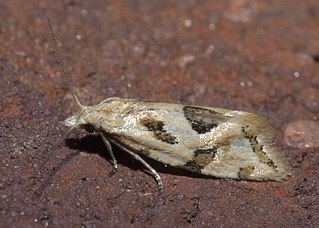
Aethes is a genus of moths belonging to the subfamily Tortricinae of the family Tortricidae.

Phalonidia is a genus of moths belonging to the subfamily Tortricinae of the family Tortricidae.

Parachela is an order of tardigrades in the class Eutardigrada. Members of this order have existed for at least 72 million years, up to the present. The oldest known species are Beorn leggi and Aerobius dactylus.
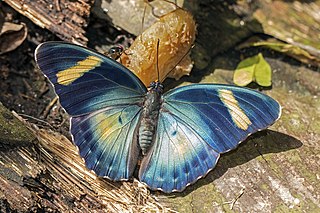
Euphaedra is a butterfly genus in the subfamily Limenitidinae. The species are confined to the Afrotropical realm mainly in the Guinean Forests of West Africa and the Congolian forests.

The Blissidae are a family in the Hemiptera, comprising nearly 50 genera and 400 species. The group has often been treated as a subfamily of the Lygaeidae but was resurrected as a full family by Thomas Henry (1997).
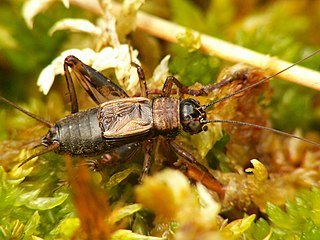
Nemobiinae is a subfamily of the newly constituted Trigonidiidae, one of the cricket families. The type genus is Nemobius, which includes the wood cricket, but members of this subfamily may also be known as ground crickets or "pygmy field crickets".

Daboia is a genus of venomous vipers.
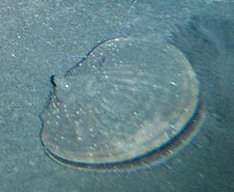
Adamussium is a genus of scallops belonging to the family Pectenidae from the Southern Ocean around Antarctica. There are three known species but only one is extant, the Antarctic scallop. Of the two extinct species A. jonkersi is from the Oligocene deposits on King George Island in the South Shetland Islands and the other, A. necopinatum, was described in 2016 from Pliocene marine deposits in the Vestfold Hills of East Antarctica.

Entoloma necopinatum is a species of agaric in the family Entolomataceae. The species is currently only known from Chile, occurring in Nothofagus forests. Threats to its habitat have resulted in Entoloma necopinatum being assessed as globally "vulnerable" on the IUCN Red List of Threatened Species.















